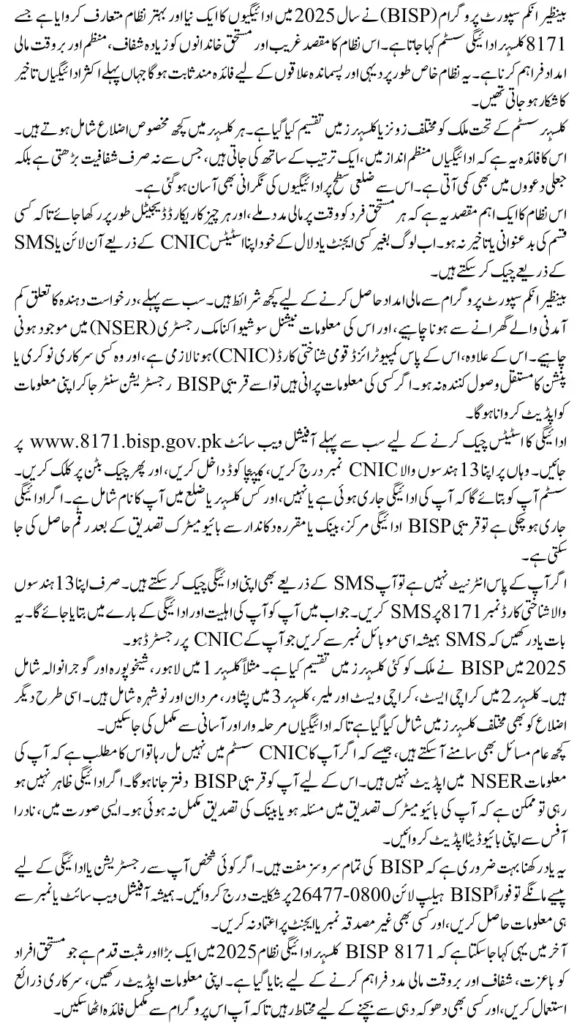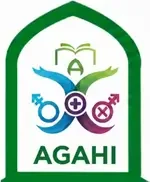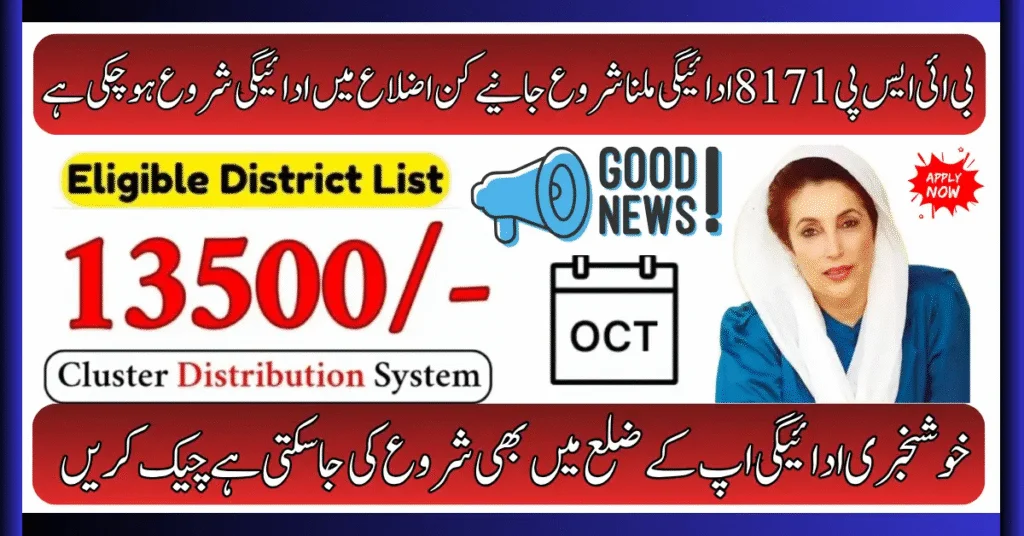BISP 8171 Kafalat New Cluster Payment Method
The Benazir Income Support Programme has launched a new and improved system in 2025 called the BISP 8171 Kafalat new Cluster Payment. This step has been taken to make sure financial aid is delivered more quickly, transparently, and fairly to deserving families across Pakistan.
If you’re already registered or planning to register, this guide will help you understand how the cluster payment system works, who is eligible, how to check your payment status by CNIC, and how to avoid scams.
What is BISP 8171 Cluster Payment 2025?
The Cluster Payment System is a new way of distributing BISP payments in 2025. Instead of sending funds across all regions at once, BISP now divides the country into specific clusters, each made up of a group of districts.
This system helps BISP:
- Send payments on time
- Reduce fraud and payment delays
- Track distribution district-wise
- Manage resources better, especially in remote and rural areas
It’s a more organized and transparent method that ensures no eligible family is left behind.

Objectives of the Cluster Payment System
The main goals of the BISP 8171 Cluster Payment initiative are:
- Equitable Distribution: Make sure all eligible families receive payments regardless of their location.
- Digital Monitoring: Use technology to track payments and provide real-time updates.
- Easy CNIC-Based Verification: Let people check their status online without visiting offices.
- Better Service Delivery: Strengthen support for poor and vulnerable families.
Who is Eligible for BISP 8171 Payments in 2025?
To receive payments under BISP 8171 in 2025, you must meet the following conditions:
- Belong to a low-income family listed in the National Socio-Economic Registry (NSER)
- Have a valid Computerized National Identity Card (CNIC)
- Not receiving a regular government salary or pension
- Be registered or updated in the 2025 BISP data system
Note: If you haven’t updated your data recently, visit the nearest BISP registration center to participate in the latest NSER survey.
Also read: Sindh CM Workers Welfare Card (WWC) 2025 with New Benefits
How to Check BISP 8171 Payment Status Online Using CNIC
BISP has made it very simple for beneficiaries to check their payment status online. Here’s how:
Step-by-Step Guide:
- Visit the Official Website
Go to www.8171.bisp.gov.pk - Enter Your CNIC Number
Type your 13-digit CNIC number (without dashes) in the required field. - Enter CAPTCHA Code
Fill in the image-based code to prove you’re a real user. - Submit Your Request
Click the Submit or Check Status button. - View Your Payment Details
The website will show:- Whether you are eligible
- If your payment is released
- Your cluster and district info
- Collect Your Payment
If payment is available, visit the nearest BISP payment center, bank branch, or retailer for collection.
Biometric verification is required at the time of collection.
BISP 8171 SMS Method to Check Status
If you don’t have internet access, you can check your status using a simple SMS.
How to Use SMS Method:
- Send your 13-digit CNIC number to 8171
- You’ll receive a reply with your eligibility and payment status
Important: Always use a SIM registered under your CNIC for accurate updates.
Also read: Panic Button Rahim Yar Khan: New Safety System for Quick Police Help
Cluster-Based District-Wise Payment Distribution
In 2025, BISP introduced clusters to manage the fund transfer process more efficiently. Each cluster includes a few districts that receive payments together.
Example Clusters for 2025:
- Cluster 1: Lahore, Sheikhupura, Gujranwala
- Cluster 2: Karachi East, Karachi West, Malir
- Cluster 3: Peshawar, Mardan, Nowshera
- Cluster 4: Quetta, Sibi, Khuzdar
- Cluster 5: Multan, Bahawalpur, Dera Ghazi Khan
You can find the complete cluster list on the official BISP website or by visiting your nearest BISP office.
Why District Clustering Matters
The district clustering system is important because it:
- Sends payments in smaller, manageable batches
- Helps regional offices with better logistics
- Ensures efficient deployment of staff and biometric machines
- Makes payment issues easier to solve
Common Issues & How to Fix Them
Here are some common problems people face and how to resolve them:
CNIC Not Found
- Reason: Your information may not be updated in NSER.
- Solution: Visit the nearest BISP Registration Center and update your data.
Payment Delayed or Not Showing
- Reason: Issues with bank verification or biometric mismatch.
- Solution: Ensure your biometrics are updated with NADRA and your CNIC is valid.
SIM Not Registered in Your Name
- Reason: You may not receive SMS alerts.
- Solution: Use a SIM registered with your own CNIC.
Biometric Verification Failed
- Reason: Fingerprints not matching in the system.
- Solution: Visit NADRA office to update your fingerprints or facial data.
Also read: Pakistan Passport Rules Change: Old Child B-Forms No Longer Valid, Says NADRA
Tips to Stay Safe from BISP Scams
BISP services are completely free. Beware of fraudsters pretending to be officials.
Common Scam Tactics:
- Asking for money to release your payment
- Offering registration services for a fee
- Calling from unknown or fake numbers
Always verify through official sources and call the BISP helpline if in doubt.
BISP Contact Information
If you need help or want to report an issue, use these official contact channels:
- Helpline: 0800-26477
- SMS Inquiry: Send your CNIC to 8171
- Website: www.8171.bisp.gov.pk
- Tehsil Office: Visit your nearest BISP registration or support center
Conclusion
The BISP 8171 Cluster Payment 2025 system is a major improvement in how financial assistance is delivered across Pakistan. By using cluster-based payments and allowing easy CNIC verification online or by SMS, the government has made the process smoother, faster, and fairer for those who need it the most.
Make sure your NSER data is updated, check your status regularly, and avoid scams by using only official BISP platforms. With a little awareness, you can secure your payment safely and efficiently.

